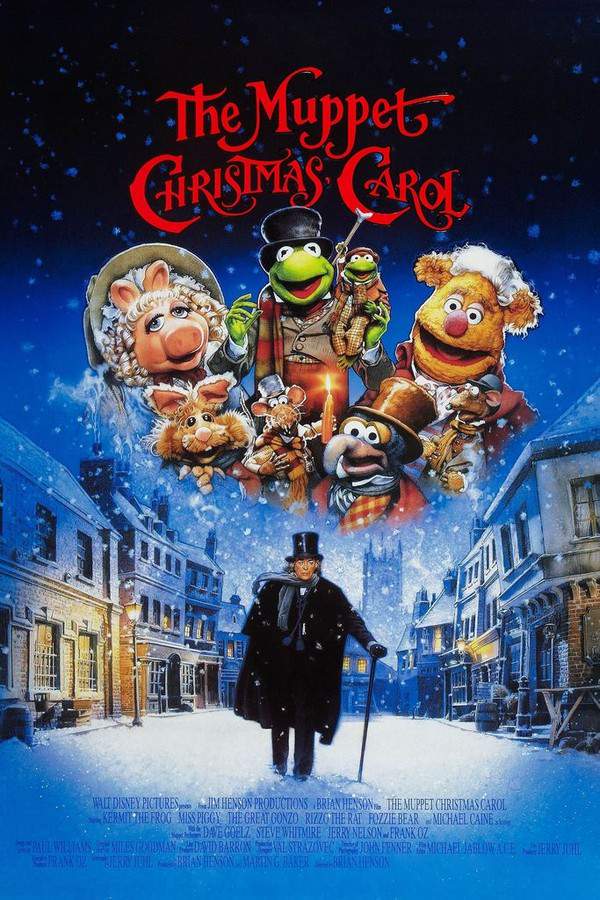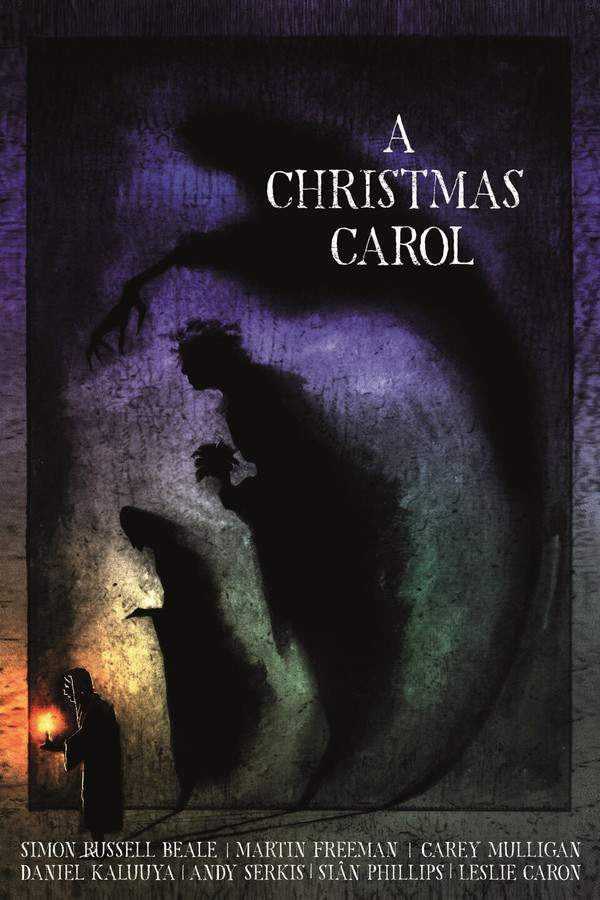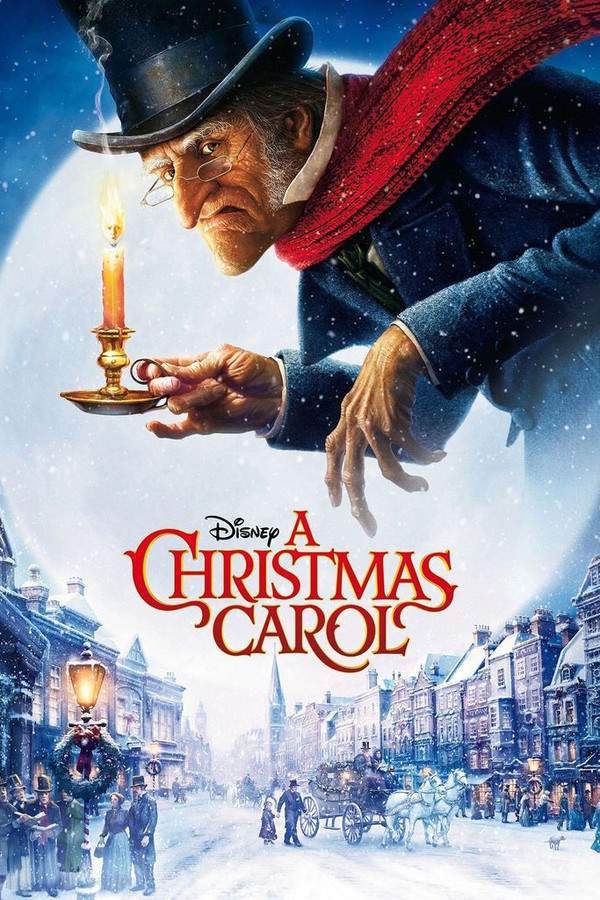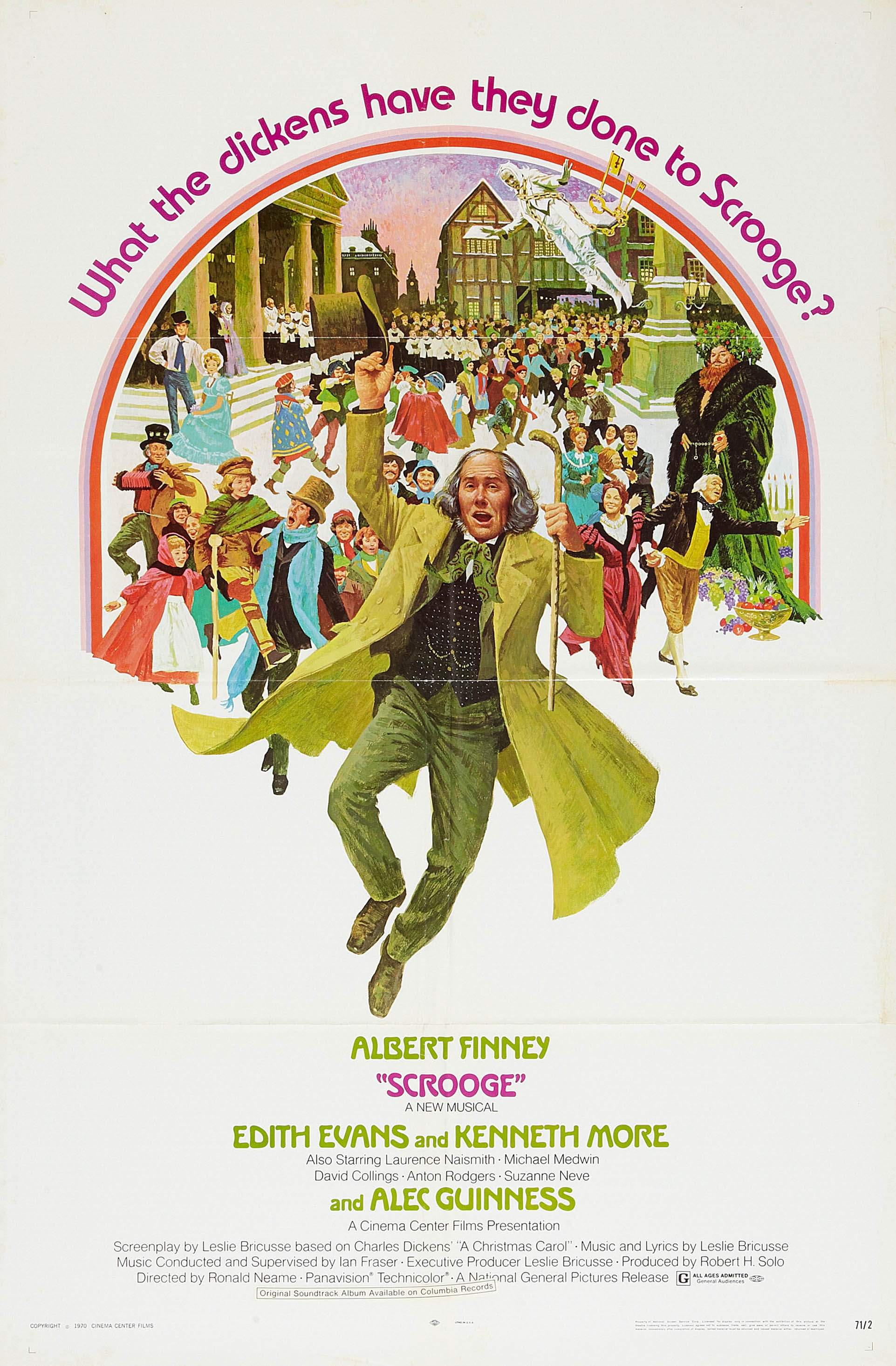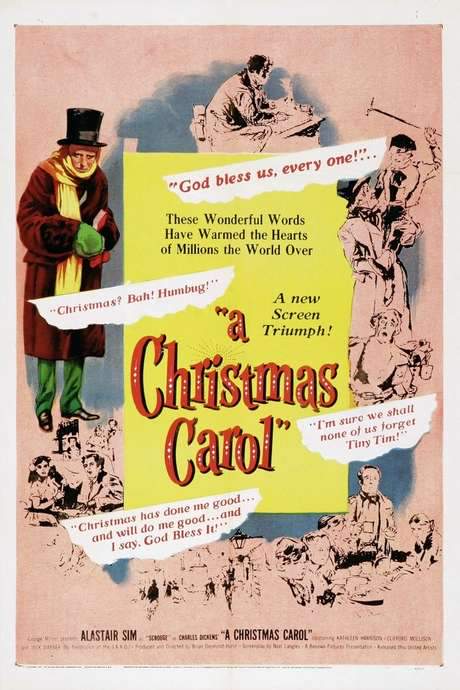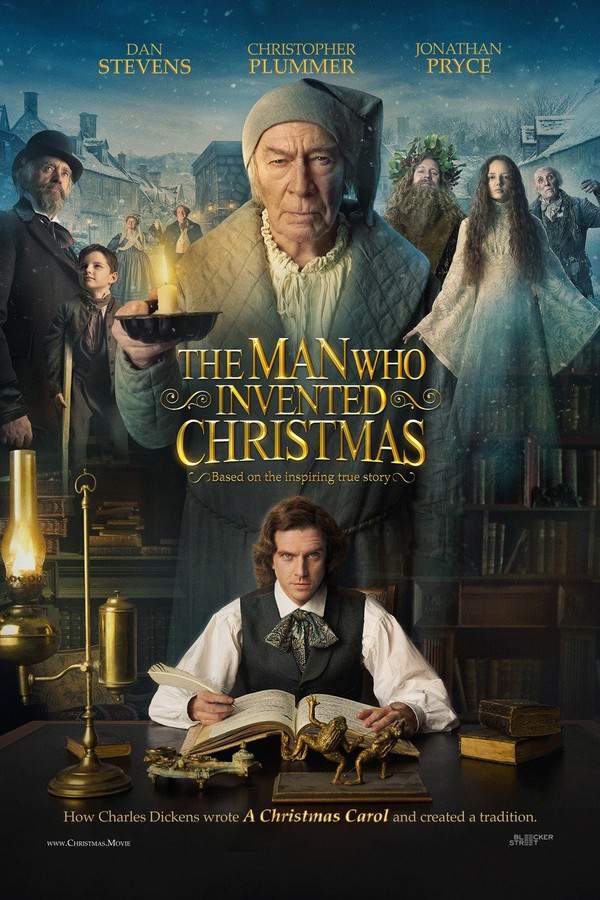
The Man Who Invented Christmas 2017
Directed by

Bharat Nalluri
Made by

Bleecker Street Media
Test your knowledge of The Man Who Invented Christmas with our quiz!
The Man Who Invented Christmas Plot Summary
Read the complete plot summary and ending explained for The Man Who Invented Christmas (2017). From turning points to emotional moments, uncover what really happened and why it matters.
As the year 1843 begins, Charles Dickens finds himself grappling with the fallout of three consecutive literary failures. With his publishers having rejected his latest works, he is determined to salvage his reputation by creating a new book, aiming for an independent publication—all within a challenging six-week deadline to ensure its release by Christmas. In the midst of a grim London backdrop, his inspiration springs from the stark disparity between a lavish funeral attended by only a handful of people and the sour demeanor of an elderly man who derisively labels him “Humbug.” This unexpected muse leads to the birth of A Christmas Carol, despite the skepticism from his contemporaries, who regard the festive period as inconsequential and its observance as a rare occurrence.
As Charles dives deeper into his storytelling, he becomes engulfed by the very characters that he conjures into existence. Ebenezer Scrooge (played by Christopher Plummer), the grumpy protagonist, starts to take on a life of his own, reminding Charles of the moral urgency that propels the narrative forward. The input of Tara (portrayed by Anna Murphy), the astute Irish nursemaid looking after his children, adds further depth to his creative process with her sharp observations and literary perspectives.
Yet, the arrival of Charles’ peculiar father, John Dickens, disrupts the flow of writing and reintroduces a dose of reality into his artistic pursuits. His father’s peculiar behavior serves as a painful reminder of their family’s ongoing financial troubles. As Charles tries to balance Scrooge’s redemption arc with his own harsh realities, he is faced with the limitations of his creative capacity. When Tara proposes the idea that perhaps Scrooge might save Tiny Tim, Charles finds himself at a standstill, grappling with a writer’s block caused by his profound doubts concerning humanity’s ability to change.
As the pressure of debts and personal obligations mounts, his relationships begin to unravel. A moment of fury drives both his parents and Tara away, leaving Charles in solitude to confront the repercussions of his actions. The following morning, regret consumes him for how he treated Tara, but it’s too late—she has vanished, enveloped by the fog of his own making. His wife, Catherine Dickens, holds him accountable for his reckless behavior and emotional volatility, expressing a deep-rooted concern that he places his art above everything else.
Through profound introspection, Charles’ bitterness towards his father is finally laid bare. His childhood was marred by the brutal reality of working in a blacking factory, a direct result of John Dickens’ financial blunders that led to their family’s incarceration for debt. This traumatic past left a lasting impact on Charles, intensifying his insecurities and resentment towards his father.
Despite this overwhelming burden, with Scrooge’s guidance, he embarks on a transformative journey of self-discovery. Charles learns that his narrative isn’t solely steeped in bitterness, but rather one of hope and renewal. Fueled by this newfound determination, he rushes home to finalize his manuscript, embodying the essence of his emotional evolution.
In an unexpected twist of fate, Tara appears at his door, returning a book he had lent her previously. Charles seizes this chance to apologize for his earlier outburst, inviting her back into his life. His wife encourages him to extend the same reconciliation gesture towards his father, who is preparing to leave London on a train.
Taking her wise counsel to heart, Charles reconnects with his father, paving the way for healing and reconciliation. With time slipping away, he submits his manuscript just in time for printing ahead of Christmas.
As the Dickens family revels in the holiday cheer, the world outside undergoes a transformation of its own. The success of Charles’ masterpiece, A Christmas Carol, spreads rapidly, leaving an indelible impact on the very fabric of Christmas as we celebrate it today. In a poignant conclusion, the lasting legacy of this cherished tale serves as a powerful testament to the significance of storytelling and the resilience of the human spirit.
The Man Who Invented Christmas Timeline
Follow the complete movie timeline of The Man Who Invented Christmas (2017) with every major event in chronological order. Great for understanding complex plots and story progression.
Charles Dickens' Struggles
As 1843 begins, Charles Dickens faces the aftermath of three literary failures. His desperation to restore his reputation pushes him to embark on writing a new book with an ambitious six-week deadline.
The Inspiration for A Christmas Carol
Amidst a grim London backdrop, Charles Dickens finds inspiration from a lavish funeral attended by few and an elderly man's disdainful words. This encounter sparks the idea for *A Christmas Carol*, despite the skepticism from his peers.
Creation of Ebenezer Scrooge
As Charles delves into his storytelling, Ebenezer Scrooge, the grumpy protagonist, begins to seem real to him. This character embodies the moral urgency of the narrative and pushes Dickens to confront his own feelings.
Tara's Influence
Tara, the astute Irish nursemaid, plays a significant role in Charles' creative process. Her observant nature and literary insights add depth to the narrative, helping him navigate the complexities of Scrooge's character.
The Arrival of John Dickens
Charles' father, John Dickens, arrives, hindering Charles' creative flow. His father's unorthodox behavior serves as a painful reminder of their financial struggles, complicating Charles' writing experience.
Writer's Block and Doubt
As the deadline approaches, Charles faces writer's block and profound doubts regarding humanity's potential for change. Tara suggests a pivotal idea: that Scrooge might save Tiny Tim, which further complicates his creative process.
Relationships Disintegrate
Under immense stress, Charles' personal relationships begin to unravel. A moment of rage drives away both his parents and Tara, leaving him isolated to confront the consequences of his actions.
Regret and Loss
Consumed by regret the next morning, Charles realizes the cost of his earlier fury. Tara has disappeared, a symbol of the emotional fog he created, leaving him to grapple with the fallout of his decisions.
Catherine's Concern
Catherine Dickens, Charles' wife, expresses her worries about his mental state. She believes his fixation on art overshadows his responsibilities, highlighting the strain his creative process has put on their marriage.
Facing Childhood Trauma
Through introspection, Charles confronts the bitterness he holds against his father. Memories of a harsh childhood in a blacking factory resurface, revealing how these experiences have shaped his insecurities.
A Journey of Self-Discovery
Guided by Scrooge, Charles begins a transformative journey of self-discovery. He learns that his story holds elements of hope and renewal rather than just bitterness, reigniting his passion for writing.
Tara's Return
In a surprising twist, Tara returns to return a book. This unforeseen encounter allows Charles to apologize and invites her back into his life, marking a moment of potential reconciliation.
Reconciliation with His Father
Taking his wife's advice, Charles reaches out to his father just before he departs London. This moment of reconciliation marks a significant step in healing their strained relationship.
Submission of the Manuscript
With the deadline looming, Charles completes his manuscript just in time for publication. His efforts to intertwine personal struggles with Scrooge's tale culminate in the submission of *A Christmas Carol*.
The Legacy of A Christmas Carol
As the Dickens family celebrates Christmas, the world outside begins to shift. The success of *A Christmas Carol* leaves a lasting impact on Christmas traditions, showcasing the enduring power of storytelling.
The Man Who Invented Christmas Characters
Explore all characters from The Man Who Invented Christmas (2017). Get detailed profiles with their roles, arcs, and key relationships explained.
Charles Dickens (Dan Stevens)
Charles Dickens is portrayed as a determined yet vulnerable writer facing a series of setbacks. His external struggles with publishing highlight his internal battles with self-worth and legacy. Throughout the story, he evolves from a frustrated artist to one who embraces hope and reconciliation, learning to balance his personal life with his creative ambitions.
Ebenezer Scrooge (Christopher Plummer)
Ebenezer Scrooge serves as a symbol of greed and isolation, representing the worst of humanity's traits. However, through the lens of Charles Dickens, he also embodies the potential for change and redemption. His character development parallels Charles's, showcasing the journey from bitterness to goodwill, ultimately advocating for compassion and generosity.
John Dickens (Jonathan Pryce)
John Dickens, Charles's father, is depicted as a reminder of unresolved family conflicts and the weight of past mistakes. His quirks and financial irresponsibility deeply affect Charles, shaping his emotional landscape. The complex relationship between Charles and John highlights themes of forgiveness, understanding, and reconciliation as Charles confronts his painful childhood.
Tara (Anna Murphy)
Tara is characterized as an insightful and perceptive Irish nursemaid who adds depth to Charles Dickens's creative process. Her presence acts as a catalyst for Charles's artistic journey, emphasizing the importance of collaboration and support in overcoming personal struggles. Tara's sharp observations provide critical insights that steer the narrative toward hope and redemption.
The Man Who Invented Christmas Settings
Learn where and when The Man Who Invented Christmas (2017) takes place. Explore the film’s settings, era, and how they shape the narrative.
Time period
1843
The year 1843 was marked by economic challenges and social disparities, especially for the lower classes in England. It was during this period that Charles Dickens faced his own literary failures, prompting him to write 'A Christmas Carol.' This time frame reflects the cultural shift towards recognizing social responsibility and fostering compassion, which are central themes in Dickens's celebrated work.
Location
London
London serves as the grim backdrop for the events of the film, embodying the struggles and disparities of Victorian society. Known for its bustling streets and rich literary heritage, the city reflects the hardships faced by Charles Dickens. This environment plays a crucial role in inspiring Dickens to craft his enduring story of transformation and hope.
The Man Who Invented Christmas Themes
Discover the main themes in The Man Who Invented Christmas (2017). Analyze the deeper meanings, emotional layers, and social commentary behind the film.
📚
Redemption
Redemption threads throughout the narrative as characters grapple with their past decisions and seek forgiveness. Through the character of Ebenezer Scrooge and Charles Dickens's tumultuous relationship with his father, the theme highlights the possibility of personal growth and moral regeneration, emphasizing that it's never too late to change.
🎨
Creativity
Creativity is central to Dickens's journey as he battles writer's block and strives to weave a narrative that is both compelling and meaningful. The film showcases the intense pressure an artist faces when seeking to balance personal truth with public approval, revealing how creativity can serve as both a refuge and a source of conflict.
❤️
Family
Family dynamics play a significant role in the film, illustrating the complexities of relationships during times of stress. Charles's connection with his wife, his children, and his estranged father showcases the challenges of balancing familial duties with artistic pursuits, culminating in a journey toward reconciliation and understanding.

Coming soon on iOS and Android
The Plot Explained Mobile App
From blockbusters to hidden gems — dive into movie stories anytime, anywhere. Save your favorites, discover plots faster, and never miss a twist again.
Sign up to be the first to know when we launch. Your email stays private — always.
The Man Who Invented Christmas Spoiler-Free Summary
Discover the spoiler-free summary of The Man Who Invented Christmas (2017). Get a concise overview without any spoilers.
In the soot‑stained streets of 1840s London, a city of stark contrasts and relentless hustle, a weary writer races against time to salvage his reputation before the holidays arrive. The atmosphere is thick with the chill of winter, the glow of oil lamps, and the lingering scent of poverty that seeps into every alley. Against this backdrop, the film paints a world where the desperate need for a breakthrough collides with the timeless yearning for warmth and redemption, setting a tone that is both gritty and oddly hopeful.
Charles Dickens arrives at the centre of this turmoil, a celebrated name now bruised by three recent literary failures and mounting debts. He is surrounded by a cast of familiar faces who shape his creative struggle: his supportive yet strained wife, Catherine Dickens, his often‑overbearing father, John Dickens, whose own missteps cast long shadows, and Tara, an observant Irish nursemaid whose keen eye on the lives of the city’s downtrodden fuels his imagination. Within his mind, the gruff figure of Ebenezer Scrooge begins to take shape, a ghostly embodiment of the era’s callousness that both haunts and guides the writer. The interplay of these relationships is rendered with a delicate blend of humor, tension, and affection, hinting at deeper emotional currents without revealing their outcomes.
The film’s mood swings between the somber reality of a family teetering on the edge of ruin and the shimmering promise of storytelling as a lifeline. Light filters through cramped windows as our protagonist wrestles with his own doubts, drawing inspiration from the very streets that threaten to swallow him. The tone remains intimate and immersive, inviting the audience to feel the weight of each pen stroke and the flicker of hope that a single tale might illuminate an entire season. Through rich period details and an earnest, almost palpable devotion to his craft, the story promises a journey of creativity, reconciliation, and the quiet power of a narrative to reshape both personal destiny and collective tradition.
Can’t find your movie? Request a summary here.
Movies with Similar Twists and Themes
Uncover films that echo the narrative beats, emotional arcs, or dramatic twists of the one you're exploring. These recommendations are handpicked based on story depth, thematic resonance, and spoiler-worthy moments — perfect for fans who crave more of the same intrigue.
Featured on this page

What's After the Movie?
Not sure whether to stay after the credits? Find out!
Explore Our Movie Platform
New Movie Releases (2025)
Famous Movie Actors
Top Film Production Studios
Movie Plot Summaries & Endings
Major Movie Awards & Winners
Best Concert Films & Music Documentaries
Movie Collections and Curated Lists
© 2025 What's After the Movie. All rights reserved.


